By Dr. Poonum Wilkhu, MPharm, PgDiP, IP, Doctorate in Public Health
Quick Answer Summary
Why does my dog eat poop? Dogs eat poop (coprophagia) primarily due to habit, hunger, stress, boredom, or attention-seeking behaviour. Only 5% of cases involve underlying medical conditions. Whilst disgusting to humans, this behaviour affects 1 in 4 dogs and is rarely dangerous, though it requires proper management for hygiene and social reasons.
Emergency Protocol: If your dog suddenly starts eating poop after never doing so before, or shows other symptoms like vomiting, weight loss, or lethargy, contact your veterinary surgeon immediately as this may indicate underlying illness.
Understanding Coprophagia: The Science Behind Poop Eating
As a clinical pharmacist specialising in pet health, I frequently encounter concerned pet parents asking "why does my dog eat poop?" This behaviour, known medically as coprophagia, affects approximately 25% of dogs at some point in their lives and represents one of the most misunderstood aspects of canine behaviour [1].
Coprophagia derives from the Greek words "kopros" (faeces) and "phagein" (to eat). Whilst this behaviour may seem revolting to humans, it's important to understand that dogs experience the world differently through their enhanced sense of smell and taste. What appears disgusting to us may actually provide valuable information or even nutritional benefits to our canine companions.
The key to addressing coprophagia lies in understanding its underlying causes, which range from completely normal evolutionary behaviours to serious medical conditions requiring immediate intervention. As a pharmaceutical expert, I've observed that successful treatment requires a comprehensive approach that addresses both the physical and psychological factors contributing to this behaviour.
The Evolutionary Context of Coprophagia
To understand why dogs eat poop, we must first examine this behaviour through an evolutionary lens. In the wild, canine mothers routinely consume their puppies' faeces to keep the den clean and reduce scent trails that might attract predators. This maternal behaviour, known as anogenital stimulation and waste consumption, is essential for puppy survival and represents completely normal, adaptive behaviour [2].
Wild canids also engage in coprophagia as a survival strategy during times of food scarcity. Faeces from herbivorous animals can contain partially digested plant matter and nutrients that provide caloric value during lean periods. Additionally, consuming faeces from pack members can help maintain group scent identity and provide information about the health and diet of other pack members.
Research conducted by the University of California found that wild wolves and feral dogs regularly consume faeces as part of their natural foraging behaviour, particularly during winter months when prey is scarce [3]. This behaviour is so deeply ingrained that it persists in domestic dogs despite thousands of years of selective breeding and abundant food availability.
Domestic dogs retain these evolutionary programming patterns, which explains why coprophagia often appears in situations that trigger ancestral survival responses - stress, hunger, territorial concerns, or maternal instincts. Understanding this evolutionary foundation helps explain why punishment-based training methods are often ineffective for addressing coprophagia, as they work against deeply ingrained survival programming.
Clinical Classification of Coprophagia
From a clinical perspective, coprophagia can be classified into several distinct categories, each requiring different diagnostic and treatment approaches. This classification system helps veterinary professionals and pet owners understand the underlying mechanisms and develop appropriate intervention strategies.
Autocoprophagia: Self-Faeces Consumption
Autocoprophagia, the consumption of one's own faeces, represents the most common form of coprophagia in domestic dogs. Research indicates that approximately 15% of dogs regularly engage in autocoprophagia, with certain breeds showing higher predisposition rates [4].
The neurochemical basis of autocoprophagia often involves disruptions in reward pathways similar to those seen in obsessive-compulsive disorders. Dogs with autocoprophagia frequently show altered dopamine sensitivity, leading to inappropriate reward responses to faecal consumption. This neurochemical dysfunction can be triggered by stress, nutritional deficiencies, or underlying medical conditions affecting brain chemistry.
Studies using positron emission tomography (PET) scans in dogs with compulsive behaviours, including coprophagia, have revealed altered activity in brain regions associated with impulse control and reward processing [5]. These findings suggest that autocoprophagia may represent a genuine neurological condition rather than simply a behavioural choice.
Autocoprophagia often develops during puppyhood and can become a deeply ingrained habit if not addressed early. Puppies naturally explore their environment through oral investigation, and if faecal consumption provides interesting sensory experiences or inadvertently receives attention from owners, the behaviour can become reinforced and persist into adulthood.
The timing of autocoprophagia is often predictable, with most dogs engaging in this behaviour immediately after defecation when the faeces are fresh and odour is strongest. This timing suggests that olfactory cues play a significant role in triggering the behaviour, which has implications for prevention and treatment strategies.
Allocoprophagia: Other Animals' Faeces Consumption
Allocoprophagia involves the consumption of faeces from other animals, including other dogs, cats, wildlife, or livestock. This form of coprophagia often has different underlying causes than autocoprophagia and may indicate specific nutritional deficiencies or environmental factors.
Dogs who preferentially consume cat faeces often do so because cat food is typically higher in protein and fat than dog food, making cat faeces more nutritionally dense and appealing. This behaviour may indicate that the dog's current diet is inadequate in protein or fat content, or that the dog has increased nutritional demands due to growth, pregnancy, lactation, or increased activity levels [6].
The phenomenon of dogs seeking out cat litter boxes is so common that it has led to the development of specialized pet gates and litter box designs to prevent access. However, addressing the underlying nutritional or behavioural causes is more effective than simply blocking access, as dogs may then seek alternative sources of faeces.
Consumption of herbivore faeces (horses, rabbits, deer) may indicate a need for additional fibre or specific nutrients found in plant matter. Some dogs seek out these faeces sources when their diet lacks adequate fibre or when they have digestive issues that create cravings for specific nutrients. Horse manure, in particular, contains partially digested grasses and grains that may appeal to dogs with certain nutritional deficiencies.
Wild animal faeces consumption can be particularly concerning due to parasite transmission risks. Dogs who consume fox, badger, or other wildlife faeces may be exposed to parasites not commonly found in domestic animals, requiring specialised testing and treatment protocols.
Intraspecific Coprophagia: Same-Species Consumption
Intraspecific coprophagia involves dogs consuming faeces from other dogs and often occurs in multi-dog households or areas with high dog populations. This behaviour can be social in nature, with subordinate dogs consuming the faeces of dominant pack members as a form of appeasement or social bonding.
Research has shown that dogs are more likely to consume faeces from dogs they know well compared to strange dogs, suggesting that familiarity and social hierarchy play important roles in this behaviour [7]. In multi-dog households, the pattern of which dog's faeces are consumed can provide insights into the social dynamics within the group.
In some cases, intraspecific coprophagia may indicate that one dog in the household has an underlying medical condition that makes their faeces particularly appealing to other dogs. Conditions such as diabetes, pancreatic insufficiency, or malabsorption disorders can result in faeces that contain undigested nutrients, making them attractive to other dogs.
The social learning aspect of intraspecific coprophagia is particularly important in puppies, who may learn this behaviour by observing adult dogs in the household. This observational learning can lead to the rapid spread of coprophagic behaviour among multiple dogs in the same environment.
Medical Causes of Coprophagia
Whilst many cases of coprophagia are behavioural in nature, a significant percentage have underlying medical causes that require professional diagnosis and treatment. As a clinical pharmacist, I've observed that medical causes of coprophagia are often overlooked, leading to ineffective behavioural interventions when medical treatment would be more appropriate.
Digestive Disorders and Malabsorption
Exocrine pancreatic insufficiency (EPI) represents one of the most significant medical causes of coprophagia. In this condition, the pancreas fails to produce adequate digestive enzymes, resulting in poor nutrient absorption and faeces that contain high levels of undigested nutrients. Dogs with EPI often develop intense cravings for faeces as their bodies attempt to reclaim nutrients that weren't properly absorbed during initial digestion [8].
The clinical presentation of EPI-related coprophagia typically includes weight loss despite good appetite, loose or greasy stools, and increased frequency of bowel movements. The faeces often have a characteristic pale colour and strong odour due to undigested fats and proteins. Dogs with EPI may show particular interest in their own faeces immediately after defecation, when nutrient content is highest.
Diagnosis of EPI requires specialised testing, including serum trypsin-like immunoreactivity (TLI) and cobalamin/folate levels. Treatment involves enzyme replacement therapy combined with dietary modifications and vitamin supplementation. When properly treated, EPI-related coprophagia typically resolves within 4-6 weeks as nutrient absorption improves.
Inflammatory bowel disease (IBD) can also trigger coprophagia through similar mechanisms. The chronic inflammation associated with IBD impairs nutrient absorption and can create nutritional deficiencies that drive coprophagic behaviour. Additionally, IBD often causes changes in gut bacteria populations, which can affect the scent and taste of faeces, potentially making them more appealing to affected dogs.
Small intestinal bacterial overgrowth (SIBO) represents another digestive disorder that can contribute to coprophagia. In SIBO, abnormal bacterial populations in the small intestine interfere with normal digestion and absorption, leading to nutritional deficiencies and changes in faecal composition that may trigger coprophagic behaviour.
Parasitic Infections and Coprophagia
Intestinal parasites, particularly hookworms and whipworms, can trigger coprophagia through multiple mechanisms. These parasites cause chronic blood loss and nutrient depletion, creating deficiencies that may drive dogs to seek alternative nutrient sources, including faeces [9].
Hookworms are particularly problematic because they attach to the intestinal wall and feed on blood, causing ongoing iron loss that can quickly lead to anaemia and iron deficiency. Dogs with hookworm infections often develop cravings for iron-rich substances, which may include faeces from other animals, particularly if those animals have iron-rich diets.
The relationship between parasites and coprophagia creates a concerning cycle, as coprophagic behaviour increases the risk of reinfection and transmission to other animals. Dogs who consume faeces from infected animals can acquire new parasite infections, perpetuating both the parasitic infection and the coprophagic behaviour.
Giardia infections can cause chronic diarrhoea and malabsorption, leading to nutritional deficiencies that may trigger coprophagia. Additionally, Giardia infections often cause changes in faecal odour and consistency that may make faeces more appealing to infected dogs or their housemates.
The diagnosis of parasite-related coprophagia requires multiple faecal examinations, as parasite eggs are not consistently shed in every bowel movement. Modern diagnostic techniques, including PCR testing and antigen detection, have improved the accuracy of parasite diagnosis and should be considered in dogs with sudden-onset coprophagia.
Endocrine Disorders and Increased Appetite
Diabetes mellitus can trigger coprophagia through its effects on appetite and metabolism. Dogs with uncontrolled diabetes often experience polyphagia (increased appetite) due to cellular glucose starvation despite normal or elevated blood glucose levels. This intense hunger can drive dogs to consume inappropriate items, including faeces [10].
The mechanism involves insulin deficiency or resistance preventing glucose from entering cells, creating a state of cellular starvation despite adequate food intake. The body responds by increasing appetite and seeking alternative energy sources, which may include the consumption of faeces that contain undigested nutrients.
Early signs of diabetes-related coprophagia often include increased water consumption, frequent urination, weight loss despite increased appetite, and lethargy. The coprophagic behaviour typically develops gradually as the diabetes progresses and may be one of the first behavioural changes noticed by owners.
Hyperthyroidism, whilst more common in cats, can occur in dogs and may trigger coprophagia through increased metabolic rate and appetite. The condition accelerates all metabolic processes, creating increased nutritional demands that normal food intake may not meet, potentially driving coprophagic behaviour.
Cushing's disease (hyperadrenocorticism) commonly causes increased appetite and may contribute to coprophagia. The elevated cortisol levels associated with Cushing's disease affect metabolism and can create intense food-seeking behaviours that extend to inappropriate items including faeces.
Nutritional Deficiencies and Coprophagia
Specific nutritional deficiencies can trigger coprophagia as the body attempts to obtain missing nutrients from alternative sources. Understanding these deficiencies is crucial for developing effective treatment protocols that address root causes rather than just managing symptoms.
Protein and Amino Acid Deficiencies
Protein deficiency or imbalanced amino acid profiles can trigger coprophagia, particularly in growing puppies, pregnant or lactating females, or highly active dogs with increased protein requirements. Faeces from animals fed high-protein diets (such as cats) may be particularly appealing to protein-deficient dogs [11].
The biological value of protein in commercial dog foods varies significantly, and some dogs may not be receiving adequate amounts of essential amino acids despite consuming foods that meet minimum protein requirements. This is particularly problematic for dogs fed low-quality commercial foods or inappropriate homemade diets.
Signs of protein deficiency that may accompany coprophagia include poor coat quality, slow wound healing, muscle wasting, and decreased immune function. Blood testing can reveal low albumin levels and altered amino acid profiles that confirm protein deficiency.
Taurine deficiency, whilst more commonly associated with cats, can occur in dogs and may contribute to coprophagic behaviour. Taurine is essential for proper cardiac function and neurological development, and deficiency can affect appetite regulation and food-seeking behaviours.
Vitamin B Complex Deficiencies
B-vitamin deficiencies, particularly B12 (cobalamin) and folate, can trigger coprophagia through their effects on neurological function and metabolism. These vitamins are essential for proper nervous system function, and deficiencies can affect appetite regulation and food-seeking behaviours [12].
Vitamin B12 deficiency is particularly common in dogs with digestive disorders, as B12 absorption requires proper pancreatic function and healthy intestinal bacteria populations. Dogs with B12 deficiency often show neurological symptoms including altered behaviour patterns and inappropriate food-seeking behaviours.
The relationship between B12 deficiency and coprophagia is complex, as the deficiency can both cause and result from coprophagic behaviour. Dogs with B12 deficiency may seek out faeces rich in B vitamins, whilst coprophagic behaviour can disrupt normal gut bacteria populations that produce B vitamins.
Folate deficiency can occur secondary to intestinal disease or poor diet quality and may contribute to coprophagia through its effects on cellular metabolism and neurological function. The deficiency can create cravings for foods rich in folate, which may include faeces from animals consuming folate-rich diets.
Mineral Deficiencies and Coprophagia
Iron deficiency represents one of the most common mineral deficiencies contributing to coprophagia. Dogs with iron deficiency may seek out faeces from animals with iron-rich diets, particularly if those animals consume meat-based diets with high iron content [13].
The relationship between iron deficiency and coprophagia is particularly strong in dogs with chronic blood loss from parasites, gastrointestinal bleeding, or other causes. The body's attempt to reclaim iron from any available source can drive intense cravings for iron-containing materials, including faeces.
Zinc deficiency can also contribute to coprophagia through its effects on appetite regulation and taste perception. Zinc is essential for proper taste and smell function, and deficiency can lead to altered food preferences and inappropriate consumption behaviours.
Signs of zinc deficiency that may accompany coprophagia include poor coat quality, skin lesions, delayed wound healing, and altered taste preferences. Zinc deficiency is particularly common in dogs fed plant-based diets or those with malabsorption disorders.
Phosphorus deficiency, whilst less common, can trigger coprophagia in dogs fed inappropriate diets or those with kidney disease. Phosphorus is essential for energy metabolism, and deficiency can create intense food-seeking behaviours as the body attempts to obtain this crucial mineral.
Behavioural and Psychological Causes
Beyond medical causes, coprophagia often has significant behavioural and psychological components that require understanding and appropriate intervention strategies. These factors are particularly important in dogs without underlying medical conditions.
Stress and Anxiety-Related Coprophagia
Chronic stress and anxiety can trigger coprophagia through multiple mechanisms, including altered brain chemistry, disrupted eating patterns, and increased oral behaviours. Dogs experiencing separation anxiety, environmental changes, or social stress may develop coprophagia as a coping mechanism [14].
The neurochemical basis of stress-related coprophagia involves alterations in serotonin and dopamine pathways that affect impulse control and reward processing. Chronic stress can lead to decreased serotonin levels, which are associated with increased compulsive behaviours including coprophagia.
Environmental stressors that commonly trigger coprophagia include moving house, changes in household composition, introduction of new pets, changes in routine, or exposure to loud noises or other anxiety-provoking stimuli. The behaviour often begins during or shortly after the stressful period and may persist even after the stressor is removed.
Treatment of stress-related coprophagia requires addressing both the underlying anxiety and the coprophagic behaviour itself. This may involve environmental modifications, behaviour modification techniques, and in some cases, anti-anxiety medications prescribed by a veterinary surgeon.
Attention-Seeking Behaviour
Some dogs learn that coprophagia reliably attracts attention from their owners, even if that attention is negative. For dogs who receive limited interaction or mental stimulation, the dramatic response that coprophagia typically provokes from humans can be reinforcing enough to maintain the behaviour [15].
The attention-seeking aspect of coprophagia is particularly common in intelligent breeds who require significant mental stimulation. These dogs may initially engage in coprophagia for other reasons but continue the behaviour because of the attention it generates.
Identifying attention-seeking coprophagia requires careful observation of the dog's behaviour patterns and the owner's responses. Dogs engaging in attention-seeking coprophagia often make eye contact with their owners during or immediately after the behaviour and may only engage in coprophagia when owners are present.
Treatment of attention-seeking coprophagia involves removing the attention reward whilst providing appropriate outlets for the dog's need for interaction and mental stimulation. This requires consistency from all family members and may initially result in an increase in the behaviour before improvement occurs.
Boredom and Insufficient Mental Stimulation
Dogs with inadequate mental and physical stimulation may develop coprophagia as a form of environmental enrichment. This is particularly common in intelligent, high-energy breeds who are left alone for extended periods without appropriate activities [16].
The relationship between boredom and coprophagia is complex, as the behaviour can provide sensory stimulation, mental engagement, and physical activity for understimulated dogs. The investigation, consumption, and aftermath of coprophagia can occupy significant time and mental energy for bored dogs.
Environmental factors that contribute to boredom-related coprophagia include lack of appropriate toys, insufficient exercise, limited social interaction, and monotonous daily routines. Dogs in these situations may develop various inappropriate behaviours, with coprophagia being just one manifestation of their unmet needs.
Prevention and treatment of boredom-related coprophagia requires comprehensive environmental enrichment, including appropriate toys, regular exercise, training activities, and social interaction. The goal is to provide appropriate outlets for the dog's mental and physical energy.
Breed Predispositions and Genetic Factors
Certain breeds show higher predispositions to coprophagia, suggesting genetic components to this behaviour. Understanding these predispositions helps pet owners and veterinary professionals assess whether coprophagic behaviour is within normal ranges for specific breeds.
High-Risk Breeds
Labrador Retrievers consistently rank among the highest coprophagia-prone breeds, with studies showing prevalence rates of up to 40% in this breed [17]. This predisposition likely relates to their strong food motivation, genetic tendency toward oral behaviours, and breeding for retrieving objects in their mouths.
The Labrador's genetic predisposition toward coprophagia appears to be linked to the same genes that contribute to their food motivation and tendency toward obesity. These dogs often show intense interest in all types of food and food-related items, including faeces.
Golden Retrievers show similar predispositions to coprophagia, though typically at lower rates than Labradors. The behaviour in Golden Retrievers often appears in conjunction with other oral behaviours such as excessive licking or mouthing of objects.
Beagles and other hound breeds show elevated coprophagia rates, possibly related to their breeding for scent work and natural foraging behaviours. These breeds' enhanced olfactory capabilities may make faeces more appealing or informative compared to other breeds.
Terrier breeds, particularly Jack Russell Terriers and Fox Terriers, show increased coprophagia rates that may relate to their high energy levels and tendency toward compulsive behaviours. These breeds often require intensive management strategies when coprophagia develops.
Age-Related Factors
Puppies show the highest rates of coprophagia, with studies indicating that up to 50% of puppies engage in this behaviour at some point during their development [18]. This high rate reflects the natural exploratory behaviour of puppies and their tendency to investigate their environment through oral contact.
Most puppy coprophagia resolves spontaneously as dogs mature, typically by 12-18 months of age. However, puppies who continue coprophagia beyond this age are more likely to maintain the behaviour into adulthood, making early intervention important.
Senior dogs may develop coprophagia secondary to cognitive decline, medical conditions, or changes in their environment. New-onset coprophagia in senior dogs should always prompt veterinary evaluation to rule out underlying medical causes.
The age of onset can provide important diagnostic information, with early-onset coprophagia more likely to be behavioural or genetic in nature, whilst late-onset coprophagia more commonly indicates underlying medical conditions.
Diagnosis and Assessment Protocols
Proper diagnosis of coprophagia requires systematic assessment of medical, nutritional, and behavioural factors. As a clinical pharmacist, I recommend a comprehensive approach that addresses all potential underlying causes.
Medical Evaluation
The medical evaluation should begin with a thorough history, including details about the onset, frequency, and circumstances of the coprophagic behaviour. Important historical information includes diet history, previous medical conditions, medications, and any associated symptoms.
Physical examination should focus on signs of underlying medical conditions, including body condition assessment, dental examination, abdominal palpation, and evaluation for signs of nutritional deficiencies or systemic illness.
Laboratory testing should include complete blood count, comprehensive metabolic panel, thyroid function testing, and urinalysis. Additional tests may include faecal examination for parasites, pancreatic function testing, and vitamin B12/folate levels depending on clinical findings.
Advanced diagnostic testing may be necessary in some cases, including abdominal imaging, endoscopy, or specialized gastrointestinal function tests. The extent of testing should be guided by clinical findings and the severity of the coprophagic behaviour.
Nutritional Assessment
Nutritional assessment should evaluate the adequacy of the current diet, including protein quality, vitamin and mineral content, and overall caloric intake. This assessment should consider the dog's life stage, activity level, and any special nutritional requirements.
Diet history should include detailed information about all foods, treats, and supplements provided, as well as feeding schedules and portion sizes. Many cases of coprophagia can be traced to inadequate nutrition or inappropriate feeding practices.
Body condition scoring and weight monitoring provide important information about nutritional status and can help identify dogs who may be experiencing hunger-related coprophagia due to inadequate caloric intake.
Consideration should be given to food allergies or intolerances that may be contributing to digestive issues and subsequent coprophagia. Elimination diet trials may be necessary in some cases to identify problematic ingredients.
Behavioural Assessment
Behavioural assessment should evaluate the dog's overall behaviour patterns, stress levels, and environmental factors that may be contributing to coprophagia. This assessment should include evaluation of the dog's daily routine, exercise levels, and mental stimulation.
Environmental factors to assess include housing conditions, presence of other animals, family dynamics, and any recent changes that may have triggered stress or anxiety. The timing and circumstances of coprophagic episodes can provide important clues about underlying causes.
Social dynamics in multi-pet households should be evaluated, as coprophagia may be related to competition for resources, social hierarchy issues, or learned behaviours from other animals.
Training history and the owner's response to coprophagic behaviour should be assessed, as inappropriate responses may inadvertently reinforce the behaviour or create additional stress for the dog.
Treatment Strategies and Management
Effective treatment of coprophagia requires addressing underlying causes whilst implementing management strategies to prevent the behaviour and its consequences. Treatment approaches should be tailored to the specific causes identified during the diagnostic process.
Medical Treatment Approaches
When underlying medical conditions are identified, appropriate treatment of these conditions often resolves coprophagia. For example, enzyme replacement therapy for pancreatic insufficiency, antiparasitic treatment for intestinal parasites, or insulin therapy for diabetes can eliminate coprophagia when these conditions are the underlying cause.
Nutritional supplementation may be necessary to address specific deficiencies identified during the diagnostic process. This may include vitamin B12 injections, iron supplementation, or other targeted nutritional interventions based on laboratory findings.
In some cases, medications may be helpful for managing coprophagia, particularly when anxiety or compulsive behaviour components are present. Selective serotonin reuptake inhibitors (SSRIs) or other psychoactive medications may be prescribed by veterinary surgeons for severe cases.
Probiotic supplementation may be beneficial for dogs with digestive issues contributing to coprophagia, as these supplements can help restore normal gut bacteria populations and improve nutrient absorption.
Dietary Management
Dietary modifications often play a crucial role in managing coprophagia. Increasing the frequency of meals whilst maintaining appropriate total caloric intake can help address hunger-related coprophagia and improve nutrient absorption.
Switching to higher-quality diets with improved digestibility and nutrient profiles may resolve coprophagia related to nutritional deficiencies or poor-quality ingredients. This is particularly important for dogs fed low-quality commercial foods or inappropriate homemade diets.
Adding fibre to the diet through appropriate supplements or high-fibre foods can help some dogs with coprophagia, particularly those who may be seeking additional fibre through faecal consumption.
Taste deterrents added to food or applied directly to faeces may help discourage coprophagia in some dogs, though these approaches are generally less effective than addressing underlying causes.
Environmental Management
Environmental modifications can significantly reduce opportunities for coprophagia whilst addressing underlying behavioural causes. Immediate cleanup of faeces removes the opportunity for coprophagic behaviour and is essential for all management protocols.
Supervised outdoor time allows for immediate intervention when coprophagic behaviour occurs whilst ensuring that dogs receive adequate exercise and mental stimulation. Leash walking in areas with faeces present may be necessary during the treatment period.
Environmental enrichment through appropriate toys, puzzle feeders, and mental stimulation activities can address boredom-related coprophagia whilst providing appropriate outlets for natural behaviours.
Stress reduction through consistent routines, appropriate exercise, and anxiety management techniques can help address stress-related coprophagia whilst improving overall behavioural health.
Training and Behaviour Modification
Positive reinforcement training can be highly effective for managing coprophagia when combined with appropriate medical and environmental interventions. Training should focus on teaching alternative behaviours and strengthening impulse control.
The "leave it" command is particularly valuable for dogs with coprophagia, as it provides a way to interrupt the behaviour before it occurs. This command should be taught using positive reinforcement techniques and practiced regularly in various contexts.
Recall training ensures that dogs can be called away from faeces before consumption occurs. Strong recall is essential for off-leash exercise and provides an important management tool for coprophagic dogs.
Attention redirection techniques can help address attention-seeking coprophagia by providing appropriate ways for dogs to gain attention whilst ignoring inappropriate behaviours.
Prevention Strategies
Preventing coprophagia is generally easier than treating established behaviour, making prevention strategies important for all dog owners, particularly those with high-risk breeds or situations.
Early Intervention in Puppies
Puppy management should include immediate cleanup of faeces and supervision during outdoor time to prevent the development of coprophagic habits. Early intervention is crucial, as coprophagia that persists beyond 12-18 months of age is more likely to become a lifelong behaviour.
Appropriate nutrition during puppyhood is essential for preventing deficiency-related coprophagia later in life. High-quality puppy foods that meet all nutritional requirements should be provided in appropriate quantities for the puppy's age and size.
Socialisation and training during the critical puppy period can help prevent anxiety and behavioural issues that may contribute to coprophagia development. Well-socialised puppies are less likely to develop stress-related behavioural problems.
Environmental enrichment from an early age helps prevent boredom-related behavioural problems, including coprophagia. Puppies should have access to appropriate toys, mental stimulation, and social interaction.
Ongoing Health Management
Regular veterinary care helps identify and address medical conditions that may contribute to coprophagia before they become severe. Annual health examinations should include discussion of any behavioural changes or concerns.
Parasite prevention through appropriate deworming protocols and flea/tick prevention reduces the risk of parasite-related coprophagia whilst protecting overall health.
Nutritional monitoring ensures that dogs continue to receive appropriate nutrition as their needs change with age, activity level, and health status. Regular body condition assessment helps identify nutritional issues early.
Stress management through consistent routines, appropriate exercise, and environmental stability helps prevent stress-related behavioural problems, including coprophagia.
When to Seek Professional Help
Whilst mild, occasional coprophagia may not require immediate veterinary intervention, certain situations warrant professional evaluation and treatment. Understanding when to seek help ensures that serious underlying conditions are identified and treated appropriately.
Emergency Situations
Sudden onset of coprophagia in dogs who have never shown this behaviour before should prompt immediate veterinary evaluation, as this may indicate serious underlying medical conditions such as diabetes, pancreatic insufficiency, or other systemic illnesses.
Coprophagia accompanied by other symptoms such as vomiting, diarrhoea, weight loss, lethargy, or changes in appetite requires immediate veterinary attention, as these combinations may indicate serious medical conditions requiring urgent treatment.
Consumption of faeces from unknown sources or wild animals may expose dogs to parasites or diseases not commonly seen in domestic animals, requiring specialised testing and treatment protocols.
Coprophagia that interferes with the dog's quality of life or creates significant stress for the family should be addressed promptly to prevent the behaviour from becoming more entrenched and difficult to treat.
Professional Treatment Indications
Coprophagia that persists despite appropriate management efforts may require professional behavioural intervention or medical treatment. Veterinary behaviourists can provide specialized assessment and treatment protocols for complex cases.
Dogs with multiple behavioural problems in addition to coprophagia may benefit from comprehensive behavioural evaluation and treatment planning. These cases often require coordinated medical and behavioural interventions.
Severe or compulsive coprophagia may require medication in addition to behavioural and environmental interventions. These decisions should be made in consultation with veterinary professionals experienced in behavioural medicine.
Multi-pet households where coprophagia is spreading between animals may require specialized management strategies and professional guidance to address the social dynamics contributing to the behaviour.
The Role of FurBabies™ Botanicals in Coprophagia Management
As a clinical pharmacist who has developed FurBabies™ Botanicals products, I understand the importance of addressing the underlying factors that contribute to coprophagia whilst supporting overall digestive and behavioural health.
Stress and Anxiety Support
Many cases of coprophagia have stress or anxiety components that can be addressed through natural approaches. FurBabies™ Botanicals products contain carefully selected botanical ingredients that support calm behaviour and stress resilience without the side effects associated with pharmaceutical interventions.
The aromatherapy benefits of lavender in our Rinse-Off Shampoo & Conditioner provide natural anxiety relief during grooming, helping to establish positive associations and reduce overall stress levels. Regular grooming with calming products can become part of a comprehensive stress management protocol.
Rose geranium in our No-Rinse Shampoo & Conditioner offers additional calming properties whilst providing natural pest deterrent effects. This dual action supports both behavioural health and physical comfort, addressing multiple factors that may contribute to stress-related coprophagia.
Digestive Health Support
Whilst FurBabies™ Botanicals products are primarily topical, the overall health and comfort they provide can support digestive wellness by reducing stress and promoting relaxation. Stress reduction is crucial for optimal digestive function and can help address some of the underlying factors contributing to coprophagia.
The gentle, pharmaceutical-grade formulations avoid harsh chemicals that might contribute to skin irritation or discomfort, supporting overall comfort and well-being. Comfortable, healthy dogs are less likely to develop stress-related behavioural problems.
Holistic Approach to Pet Health
FurBabies™ Botanicals represents a holistic approach to pet health that recognises the interconnected nature of physical and behavioural wellness. By supporting skin health, reducing stress, and providing natural therapeutic benefits, these products contribute to overall pet wellness in ways that complement medical and behavioural interventions for coprophagia.
The pharmaceutical expertise behind FurBabies™ Botanicals ensures that every ingredient is selected based on scientific evidence and safety profiles, providing pet owners with confidence in the products they use as part of their comprehensive pet care protocols.
Conclusion
Coprophagia, whilst distressing for pet owners, is a manageable condition when approached with proper understanding and comprehensive treatment strategies. As a clinical pharmacist, I emphasise the importance of identifying and addressing underlying causes rather than simply attempting to suppress the behaviour.
The key to successful coprophagia management lies in recognising that this behaviour often has multiple contributing factors that require coordinated intervention. Medical conditions, nutritional deficiencies, stress, and environmental factors all play important roles and must be addressed comprehensively for optimal outcomes.
Prevention remains the most effective approach, particularly in high-risk breeds and situations. Early intervention, appropriate nutrition, stress management, and environmental enrichment can prevent many cases of coprophagia from developing.
For dogs with established coprophagia, patience and persistence are essential. Treatment often requires several weeks to months to achieve full resolution, and relapses may occur during times of stress or illness. Consistent application of management strategies and addressing of underlying causes provides the best chance for long-term success.
The integration of natural approaches, such as those provided by FurBabies™ Botanicals, with conventional medical and behavioural interventions offers pet owners comprehensive tools for supporting their dogs' health and well-being whilst addressing the complex factors that contribute to coprophagia.
Remember that coprophagia, whilst unpleasant, is rarely dangerous and can be successfully managed with appropriate professional guidance and consistent implementation of treatment protocols. The investment in proper diagnosis and treatment pays dividends in improved quality of life for both dogs and their families.
References
[1] Hart, B.L., Hart, L.A., Thigpen, A.P., Tran, A., & Bain, M.J. (2018). The paradox of canine conspecific coprophagy. Veterinary Medicine and Science, 4(2), 106-114. https://onlinelibrary.wiley.com/doi/full/10.1002/vms3.92
[3] Mech, L.D., & Boitani, L. (2003). Wolves: Behavior, Ecology, and Conservation. University of Chicago Press.
[5] Vermeire, S., Audenaert, K., De Meester, R., Vandermeulen, E., Waelbers, T., De Spiegeleer, B., Eeckhaut, A., & Peremans, K. (2012). Serotonin 2A receptor, serotonin transporter and dopamine transporter alterations in dogs with compulsive behaviour. Psychiatry Research: Neuroimaging, 201(1), 78-87.
[8] Westermarck, E., & Wiberg, M. (2003). Exocrine pancreatic insufficiency in dogs. Veterinary Clinics of North America: Small Animal Practice, 33(5), 1165-1179.
[9] Bowman, D.D. (2014). Georgis' Parasitology for Veterinarians. 10th Edition. Elsevier Saunders.
[10] Nelson, R.W., & Couto, C.G. (2019). Small Animal Internal Medicine. 6th Edition. Elsevier.
[11] Case, L.P., Daristotle, L., Hayek, M.G., & Raasch, M.F. (2010). Canine and Feline Nutrition: A Resource for Companion Animal Professionals. 3rd Edition. Mosby.
[12] Simpson, K.W., Fyfe, J., Cornetta, A., Sachs, A., Strauss-Ayali, D., Lamb, S.V., & Reimers, T.J. (2001). Subnormal concentrations of serum cobalamin (vitamin B12) in cats with gastrointestinal disease. Journal of Veterinary Internal Medicine, 15(1), 26-32.
[13] Naigamwalla, D.Z., Webb, J.A., & Giger, U. (2012). Iron deficiency anemia. Canadian Veterinary Journal, 53(3), 250-256.
[14] Overall, K.L. (2013). Manual of Clinical Behavioral Medicine for Dogs and Cats. Elsevier.
[15] Horwitz, D.F., & Mills, D.S. (2009). BSAVA Manual of Canine and Feline Behavioural Medicine. 2nd Edition. British Small Animal Veterinary Association.
[16] Seksel, K., & Lindeman, M.J. (2001). Use of clomipramine in treatment of obsessive-compulsive disorder, separation anxiety and noise phobia in dogs. Australian Veterinary Journal, 79(4), 252-256.
[17] McGreevy, P.D., Georgevsky, D., Carrasco, J., Valenzuela, M., Duffy, D.L., & Serpell, J.A. (2013). Dog behavior co-varies with height, bodyweight and skull shape. PLoS One, 8(12), e80529.
[18] Landsberg, G.M., Hunthausen, W.L., & Ackerman, L.J. (2013). Behavior Problems of the Dog and Cat. 3rd Edition. Elsevier.
By Dr. Poonum Wilkhu, MPharm, PgDiP, IP, Doctorate in Public Health




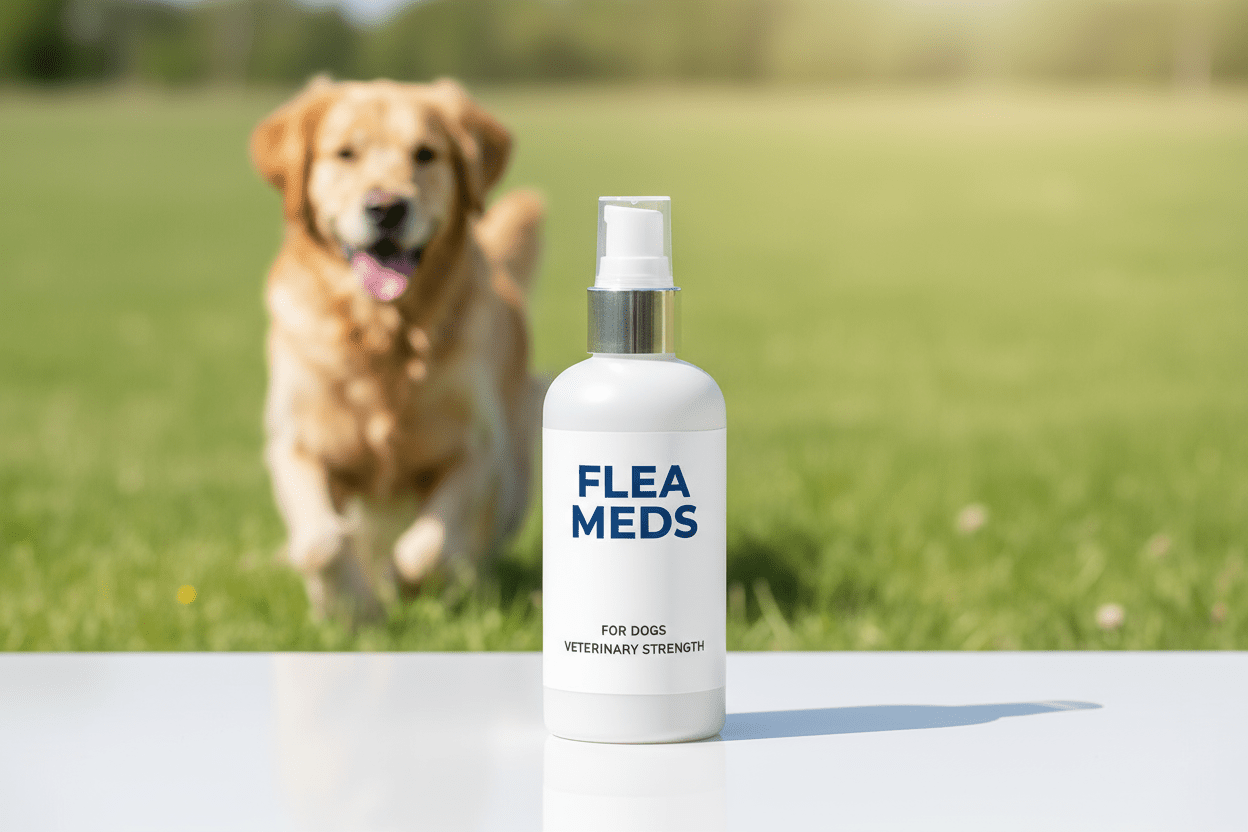
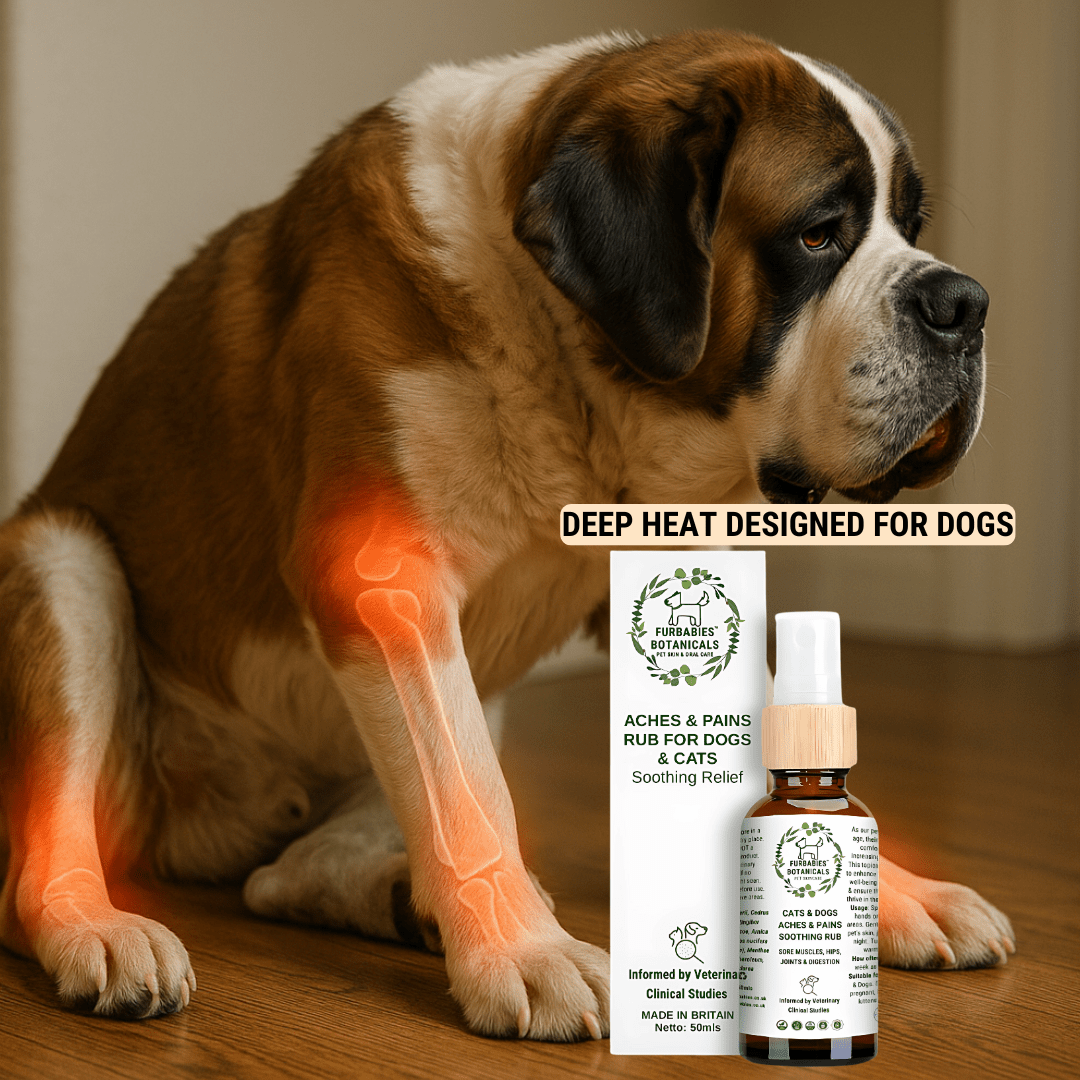


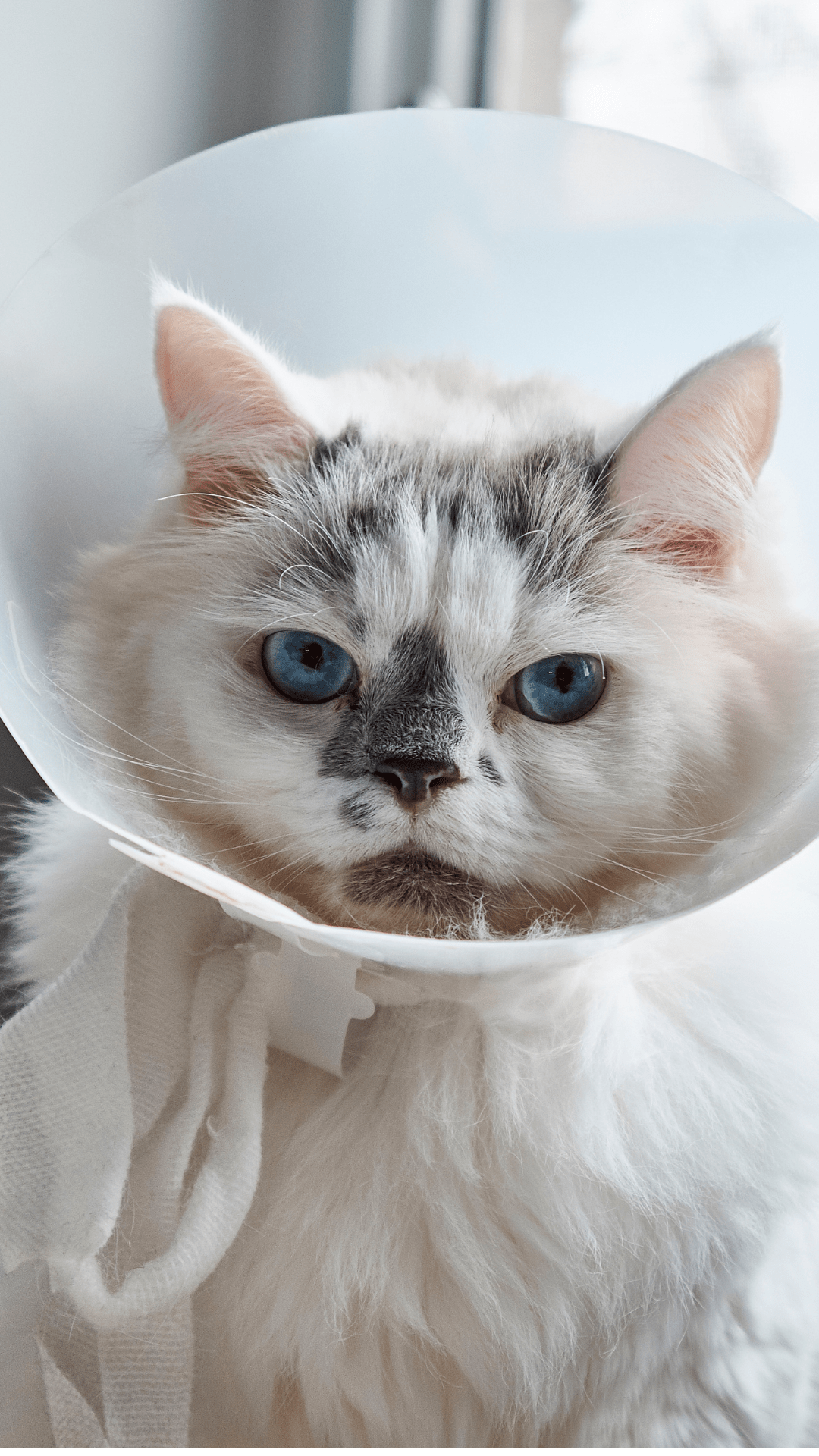
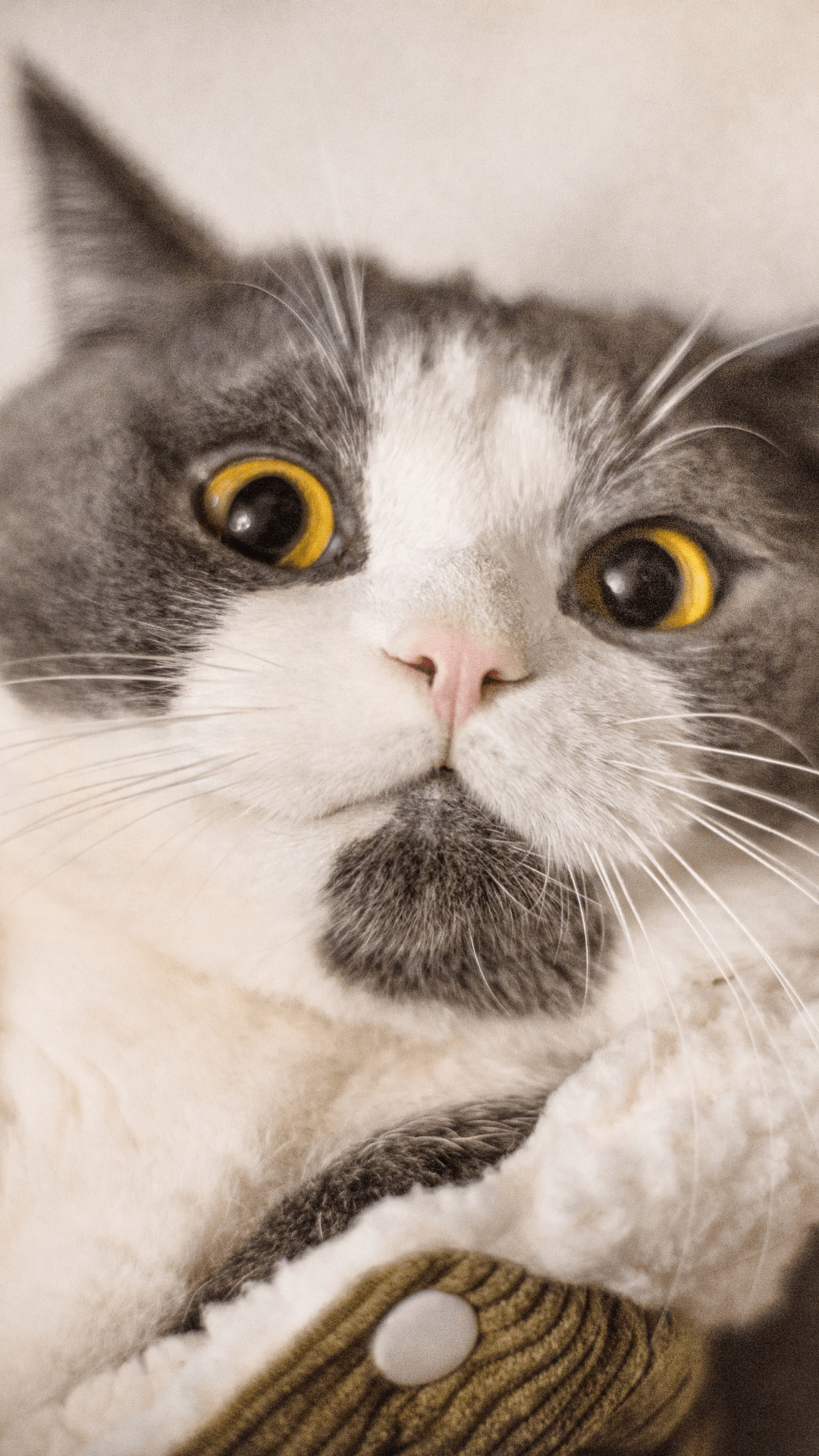


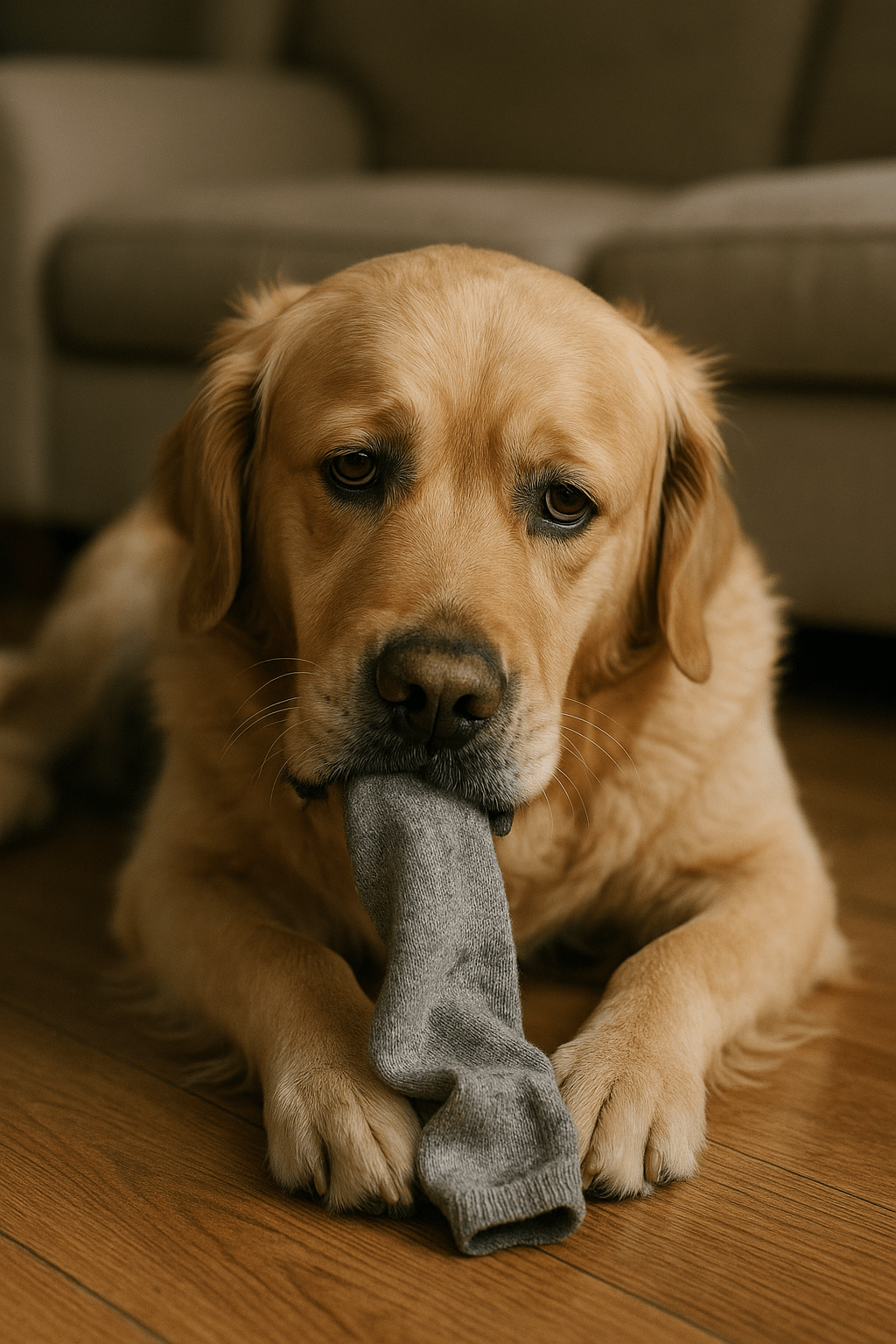
Share:
Why Dogs Eat Strange Things: The Hidden Science Behind Canine Pica
Why Does My Dog Eat Grass? A Clinical Pharmacist's Complete Guide to Canine Grass Consumption